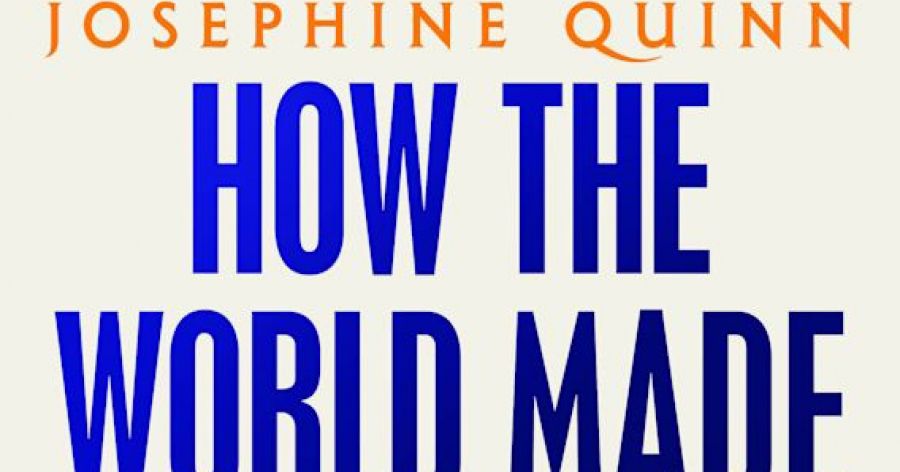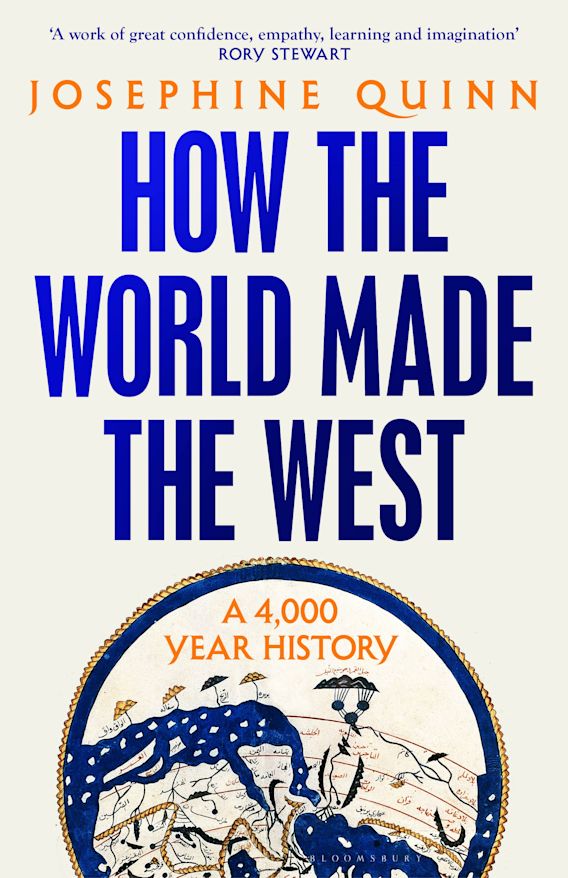
- Free Article: No
- Contents Category: Classics
- Review Article: Yes
- Article Title: Ancient pasts and truths
- Article Subtitle: Decolonising Europe's history
- Online Only: Yes
- Custom Highlight Text:
Decolonising has reached the classics. Complexity, diversity, and entanglement are in. Greece and Rome are, well, out. The movement to ‘reclaim’ Antiquity began with noble aims: to emancipate the ancients from the prism of politics and war through which we like to see them, to emphasise the role of technology and trade in their lives, and to make women and people of colour visible among them again. Alas, decolonisation all too often seems to have descended into ugly arguments over restitution of artefacts (Elgin marbles, anyone?) or the skin shade of this or that Roman notable (Septimius Severus or St Hadrian of Canterbury, for example). Books such as Josephine Quinn’s are the sensible, balancing side of the equation, an antidote to so much virtue signalling and grievance mongering. Quinn’s is an ancient world decentred – provincialised, to invoke Dipesh Chakrabarty’s celebrated term. Greece and Rome remain, but must jostle with others for attention, space, and significance. The argument is simple. Antiquity was far more multipolar, dynamic, and integrated in reality than in the civilisational – and, indeed, civilising – narratives that Europeans since Petrarch have been telling themselves about it.
- Featured Image (400px * 250px):

- Alt Tag (Featured Image): Miles Pattenden reviews ‘How the World Made the West: A 4,000-year history’ by Josephine Quinn
- Book 1 Title: How the World Made the West
- Book 1 Subtitle: A 4,000-year history
- Book 1 Biblio: Bloomsbury, $49.99 hb, 576 pp
- Book 1 Cover Small (400 x 600):

- Book 1 Cover (800 x 1200):

Some of Quinn’s insights: polyvalent patterns of maritime trade, a constant shapeshifter throughout Antiquity; uncertain adoptions, and adaptations, of alphabetic writing; the sudden (or was it?) disappearance of Minoan civilisation; the political predicament of the King of Pontus, a subject the young Mozart immortalised in his opera Mitridate, rè di Ponto. Chapters engaging familiar stories from very different angles are among the most interesting of all in Quinn’s telling. Rome and Carthage, not Rome and Athens, are brothers, as one of these explains. Another: the Persian War was not that great Greek victory of the classical tradition but a comparatively minor skirmish for Xerxes, King of Kings with irritating recalcitrants in a far-flung corner of empire. Ancient – and, indeed, medieval – historians will certainly find fresh material in Quinn’s account to flesh out their knowledge about how different places, forces, and movements interrelate.
The test of Quinn’s opus is: does she prove her thesis? The premise that Athens and Rome owed much to societies beyond a privileged Greco-Roman modern category is certainly persuasive (although not original per se). Yet showing that the world was always heavily connected does not in itself also elucidate important specificities. Why Athens and Rome and not Corinth, Sparta, or Veii? Or why not Byblos, Tyre, Alexandria, or that ‘Rome before Rome’: Carthage? Quinn’s emphasis on broad-brush economic histories, and the role of contingency, or exigencies such as climate change, limits her potential to answer such questions. Just as significantly, it creates certain narrative tensions which are not always fully resolved. How do you tell the most exciting stories about lists of objects and items? How do you make one discussion of an archaeological site sound qualitatively different from another? The difficulty of quantifying in Antiquity, and the ambiguities of reading ancient evidence, are also issues here – and explaining how ‘the world made the West’ means Quinn needs to answer them. Her answers are necessarily tentative, and that could be thought to underline the fragility and ephemeral nature of much new-found ‘ancient’ knowledge.
A broader critique of Quinn’s approach might also go like this. The ancient story which she tells is, in fact, surprisingly conventional. For all her determination to escape a Greco-Roman trap – to range around the Antique map – Quinn’s remains a fundamentally Mediterranean story. From Mesopotamia to the Pillars of Hercules, from the Saharan sands to the shores of the Black Sea – save for Alexander’s quixotic foray into India, and Marco Polo’s to China – her Ancient World knows its own bounds. But is this the right, or even sufficient, frame of reference for doing the sort of ‘big history’ through which Quinn seeks to understand pan-human developments? Her entirely valid critique of the history of ancient history is that it was all too often shaped by Europeans invested in notions of civilisation or else evangelically obsessed by the historicity of the Bible. Such motivations anchored much early archaeological initiative. Unfortunately, geopolitics, slow scholarship, and (most problematically) growing encroachment of sites by contemporary populations make those early anchors hard to shift.
The paradigm Quinn presents has ongoing consequences. It invites a question: what about the gaps – those local histories of China, India, and, indeed, the lands to the East and South of them which we know but are not covered here? A second question: how does the evidence assembled in Quinn’s chronicle relate to the totality of the evidence once knowable but now lost? Known unknowns and unknown unknowns should surely come into play, even if responsible historians, such as Quinn, are naturally reluctant to address them too directly. Can we write history without texts, even when we have archaeological evidence, and how do we interpret that evidence in the absence of textual assistance? Both are crucial questions that Quinn’s romp through the centuries inevitably foregrounds.
Of course, other scholars have also taken on such great global questions about the rise of human civilisation before. The Michigan professor Victor B. Lieberman, for instance, wrote a two-volume 1,400-page account of the ‘strange parallels’ in economic and military development, and state and religious formation across the whole of Eurasia since 800 ce. German philosopher Karl Jaspers likewise coined the phrase ‘Axial Age’ to describe the seemingly simultaneous adoption of transcendentalist religion across many Eurasian societies around the sixth and fifth centuries bce. Lieberman, a Burmese studies expert, theorises not merely connected histories but concurrent ones across a whole continent and its margins. And Quinn’s Mediterranean is marginal to him, which again invites enquiry about how it fits into the larger picture. An early modern scholar, on the other hand, would raise different objections – for instance querying Quinn’s 1492 terminal date on the grounds that the nexus of cross-cultural, trans-Mediterranean ties she describes continued to strengthen in the centuries that followed Europe’s ‘turn’ towards the Atlantic.
Overall, this is a brave, engaging, even charming attempt to tell world history accessibly by an author with considerable versatility of frame and perspective. Those who would decolonise Europe’s history would do well to start with this book, and to think about the problems it raises regarding claiming too much ownership of one version of history or narrative of traditions. Ancient pasts, and truths, live on in all of us.


Comments powered by CComment